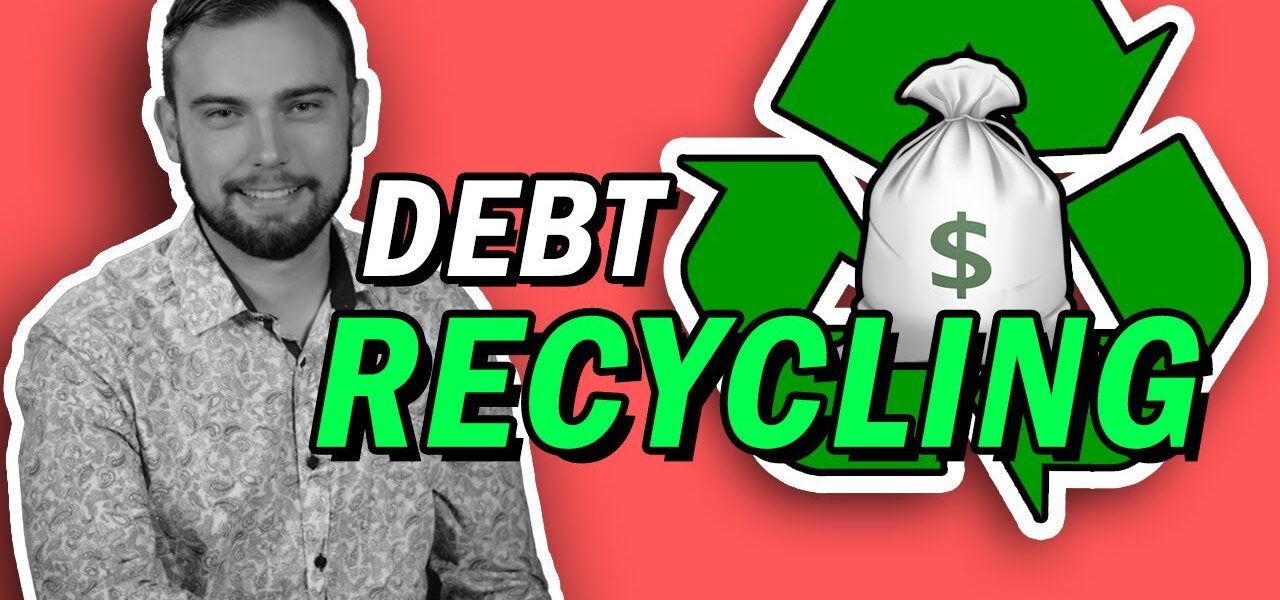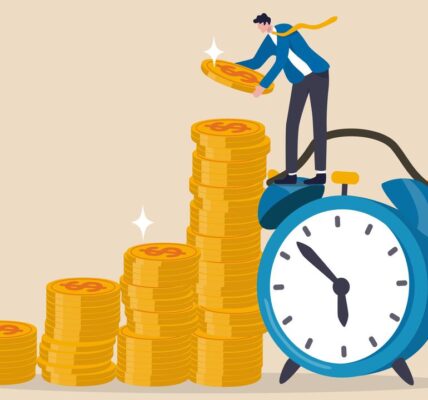In today’s world, where financial planning has become essential for securing a strong financial future, the concept of debt recycling has gained significant attention. Debt recycling is a strategy that many individuals consider when they want to maximize their wealth accumulation while managing their borrowing effectively. However, like any financial strategy, it is important to understand the risks and rewards associated with debt recycling before deciding if it is the right approach for you.
Understanding the Concept of Debt Recycling
Debt recycling is a strategy that aims to convert non-tax-deductible debt, such as a mortgage or personal loan, into tax-deductible debt, like an investment loan. This process involves leveraging the existing equity in your home by increasing your mortgage and using the additional funds by comprehensive financial advisory services in Sydney provided by financial advisor Sydney to invest in income-generating assets, such as shares or property. The key principle behind debt recycling is to create a tax-efficient structure that allows you to build long-term wealth.
The Basic Principle of Debt Recycling
The basic principle of debt recycling lies in the ability to use the income generated from your investments to pay off your non-tax-deductible debts effectively. By strategically directing the income towards your mortgage repayments, you can reduce your non-deductible debt faster and simultaneously increase your tax-deductible debt through additional investments. This creates a cycle where your investments generate income, contributing to the reduction of your non-deductible debt, while the increased deductible debt helps to further grow your investment portfolio. Learn more about complexity of self managed super fund set up.
How Debt Recycling Works
Debt recycling works by utilizing the equity in your property to access funds for investment purposes. To start the process, you would increase your mortgage, essentially borrowing against the value of your home. The additional funds received can then be invested in assets that generate income. The income generated from these investments can be used to make additional mortgage repayments, reducing your non-deductible debt. As you continue this cycle, your investments grow, and so does your tax-deductible debt.
Now, let’s delve into the details of how debt recycling works in practice. Imagine you have a mortgage on your home, and you also have some savings that you’re considering investing. Instead of using your savings to pay off your mortgage or leaving them in a low-interest savings account, debt recycling allows you to put those funds to work in a more tax-efficient manner.
First, you would consult with a financial advisor who specializes in debt recycling to assess your financial situation and goals. They would help you determine the optimal amount to increase your mortgage by, taking into account factors such as interest rates, potential investment returns, and your risk tolerance.
Once you’ve decided on the amount to increase your mortgage by, you would apply for a loan increase with your mortgage provider. This process typically involves providing documentation such as proof of income and the purpose of the loan increase. Once approved, the additional funds would be made available to you.
With the extra funds in hand, you can now start investing in income-generating assets. These assets could include shares in well-established companies, investment properties, or even a diversified portfolio managed by a professional fund manager. The key is to choose investments that have the potential to generate regular income, which can be used to make additional mortgage repayments.
As your investments generate income, you can direct that income towards making extra repayments on your mortgage. By doing so, you’re effectively reducing your non-tax-deductible debt at an accelerated rate. At the same time, the increased deductible debt from the loan increase allows you to continue investing and growing your investment portfolio.
Over time, as your investments grow, the income generated from them can become substantial. This income can be used not only to pay off your non-deductible debt but also to reinvest in additional income-generating assets. The cycle continues, with your investments fueling the reduction of your non-deductible debt while simultaneously expanding your tax-deductible debt.
It’s important to note that debt recycling is a long-term strategy that requires careful planning and ongoing monitoring. Market conditions, interest rates, and investment performance can all impact the effectiveness of debt recycling. Therefore, it’s crucial to regularly review your strategy with your financial advisor to ensure it remains aligned with your goals and circumstances.

The Potential Rewards of Debt Recycling
Although debt recycling involves risks, it also presents potential rewards that make it an attractive strategy for many individuals looking to optimize their wealth accumulation.
Debt recycling is a financial strategy that involves leveraging your existing assets, such as home equity, to invest in income-generating assets. While this approach comes with certain risks, the potential benefits can be substantial for those willing to navigate the complexities of this strategy.
Financial Benefits of Debt Recycling
One of the key rewards of debt recycling is the potential tax benefits it offers. Through the conversion of non-tax-deductible debt into tax-deductible debt, you may be able to reduce your taxable income and, consequently, your tax payable. This can result in significant savings over the long term, allowing you to allocate more funds towards wealth-building activities.
Moreover, by strategically restructuring your debt, you can potentially lower your overall interest costs, freeing up more capital to invest in income-producing assets. This can create a positive cycle where your investments generate returns that exceed the cost of borrowing, leading to enhanced wealth accumulation over time.
Long-Term Impact on Wealth Accumulation
Debt recycling has the potential to expedite the growth of your investment portfolio, ultimately accelerating your wealth accumulation. By leveraging your existing home equity and combining it with strategic investments, you can generate income that contributes to both debt reduction and investment growth. Over time, this can lead to a compounding effect, further strengthening your financial position.
Furthermore, debt recycling can provide a level of flexibility in managing your finances. By strategically structuring your debt and investments, you can adapt to changing market conditions and financial goals, ensuring that your wealth accumulation strategy remains robust and resilient in the face of economic uncertainties.
The Risks Involved in Debt Recycling
While the potential rewards of debt recycling are enticing, it is crucial to carefully consider the risks associated with this strategy.
Debt recycling is a financial strategy that involves leveraging your home equity to invest in income-producing assets, with the aim of creating wealth and potentially reducing your tax liabilities over time. However, like any investment strategy, debt recycling comes with its own set of risks that need to be carefully evaluated before implementation.
The Danger of Increased Debt
One of the primary risks of debt recycling is the increased level of debt it entails. By leveraging your home equity and increasing your mortgage, you are effectively taking on more financial responsibility. This means that if your investments do not perform as expected or if there is a downturn in the market, you could find yourself in a precarious financial position with a higher level of debt.
It is essential to conduct a thorough risk assessment to determine your risk tolerance and ensure that you have a contingency plan in place to manage any potential financial setbacks that may arise from increased debt levels.
Market Risks and Economic Factors
Another risk to be mindful of is the inherent volatility of investment markets. Investments are subject to market fluctuations, and their performance can be affected by various economic factors, such as interest rates and inflation. The success of your debt recycling strategy is closely tied to the performance of your investments, making it important to assess the market risks and economic conditions before embarking on this financial journey.
It is advisable to diversify your investment portfolio to mitigate the impact of market volatility and economic uncertainties. By spreading your investments across different asset classes and industries, you can reduce the overall risk exposure of your debt recycling strategy and enhance the potential for long-term financial growth.

Factors to Consider Before Opting for Debt Recycling
Before committing to debt recycling, it is essential to assess various factors that can impact the suitability of this strategy for your personal financial circumstances.
Debt recycling is a financial strategy that involves borrowing against the equity in your home or other assets to invest in income-producing investments. By doing so, you aim to generate additional income or tax deductions to accelerate wealth creation. However, this strategy is not without risks and requires careful consideration.
Assessing Your Financial Situation
Understanding your current financial situation is crucial before embarking on any significant financial endeavor. Assess factors such as your income stability, expenditure levels, and overall financial health. If you have a stable income, manageable expenses, and a good credit history, debt recycling may be more feasible for you. However, if you have a high level of existing debt, irregular income, or a history of financial difficulties, it may be wise to consult a financial advisor to determine if debt recycling is a suitable option.
Moreover, it is essential to consider the interest rates on both your existing debt and potential investment loans. If the interest rate on your existing debt is significantly higher than the potential investment loan, debt recycling may not be financially advantageous.
Understanding Your Risk Tolerance
Debt recycling involves a degree of risk due to the inherent uncertainties associated with investment performance and market conditions. Before considering this strategy, it is essential to evaluate your risk tolerance. Assess your comfort level regarding potential financial losses and fluctuations in your investment portfolio. If you have a low-risk tolerance, debt recycling may not be the best approach for you.
Additionally, consider the impact of changing interest rates on your cash flow. Fluctuations in interest rates can affect the cost of borrowing and the returns on your investments, potentially impacting the success of your debt recycling strategy.
The Role of Financial Advisors in Debt Recycling
Given the complexities and risks involved in debt recycling, seeking professional advice from a qualified financial advisor can be invaluable.
When to Seek Professional Advice
Financial advisors play a crucial role in helping you navigate the complexities of debt recycling. They can provide expert guidance tailored to your specific financial goals and circumstances. If you are considering debt recycling, it is advisable to seek professional advice to ensure you fully understand the risks and rewards involved and make informed decisions that align with your long-term objectives.
How Advisors Can Help in Debt Recycling
Financial advisors can assist you in determining the most appropriate strategy and investments for your debt recycling plan. They can evaluate your financial situation, risk tolerance, and investment goals to develop a personalized approach that aligns with your needs. Additionally, advisors can monitor your investments, provide ongoing support, and help adapt your strategy as your financial circumstances evolve.
In conclusion, debt recycling can be a valuable strategy for individuals looking to maximize their wealth accumulation while effectively managing their borrowing. By converting non-tax-deductible debt into tax-deductible debt and strategically investing the funds, it is possible to achieve long-term financial benefits. However, debt recycling is not without risks, and careful consideration of your financial situation and risk tolerance is essential. Seeking professional advice from a qualified financial advisor can help guide you through the intricacies of debt recycling and ensure you make informed decisions that align with your financial goals.



